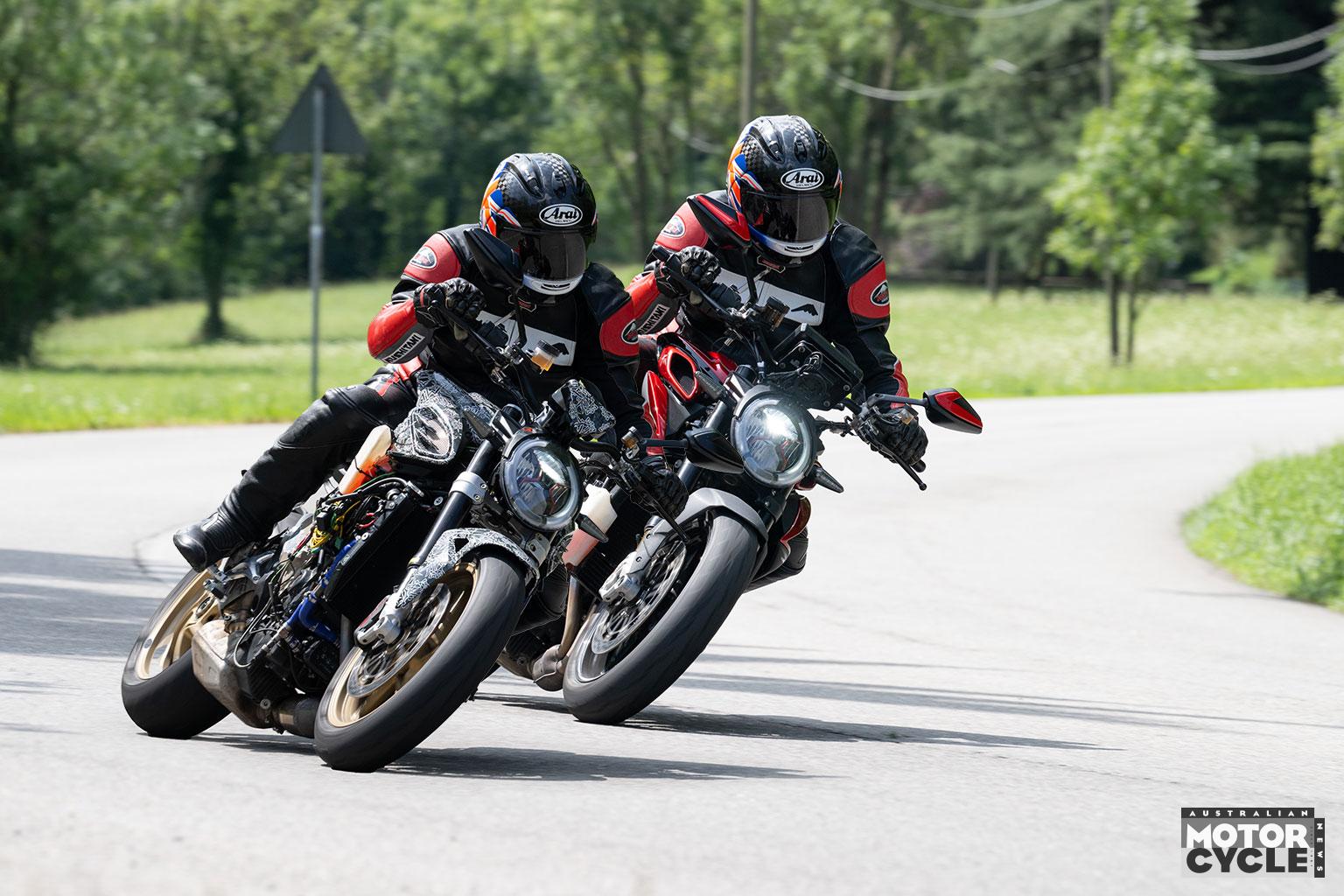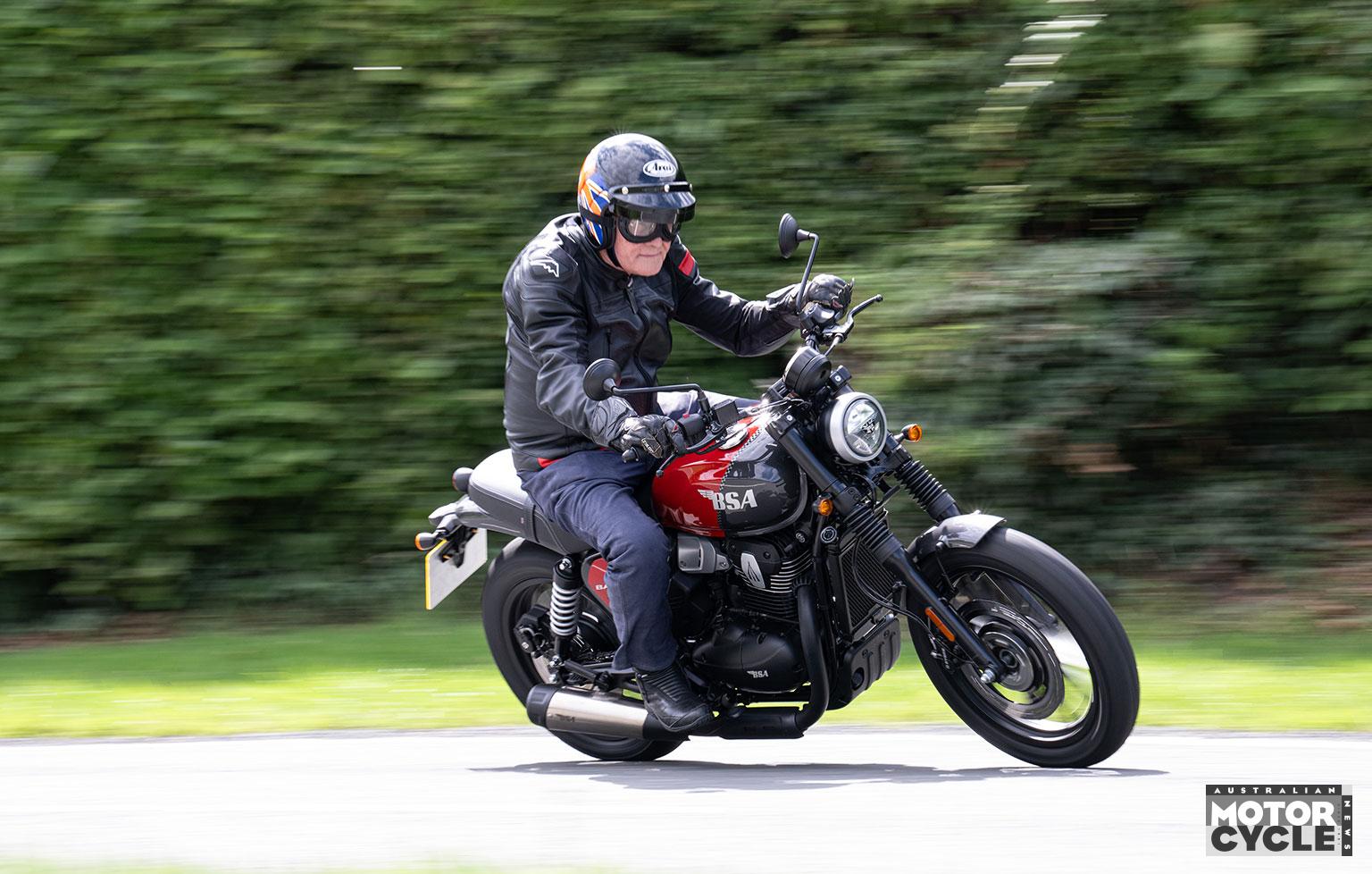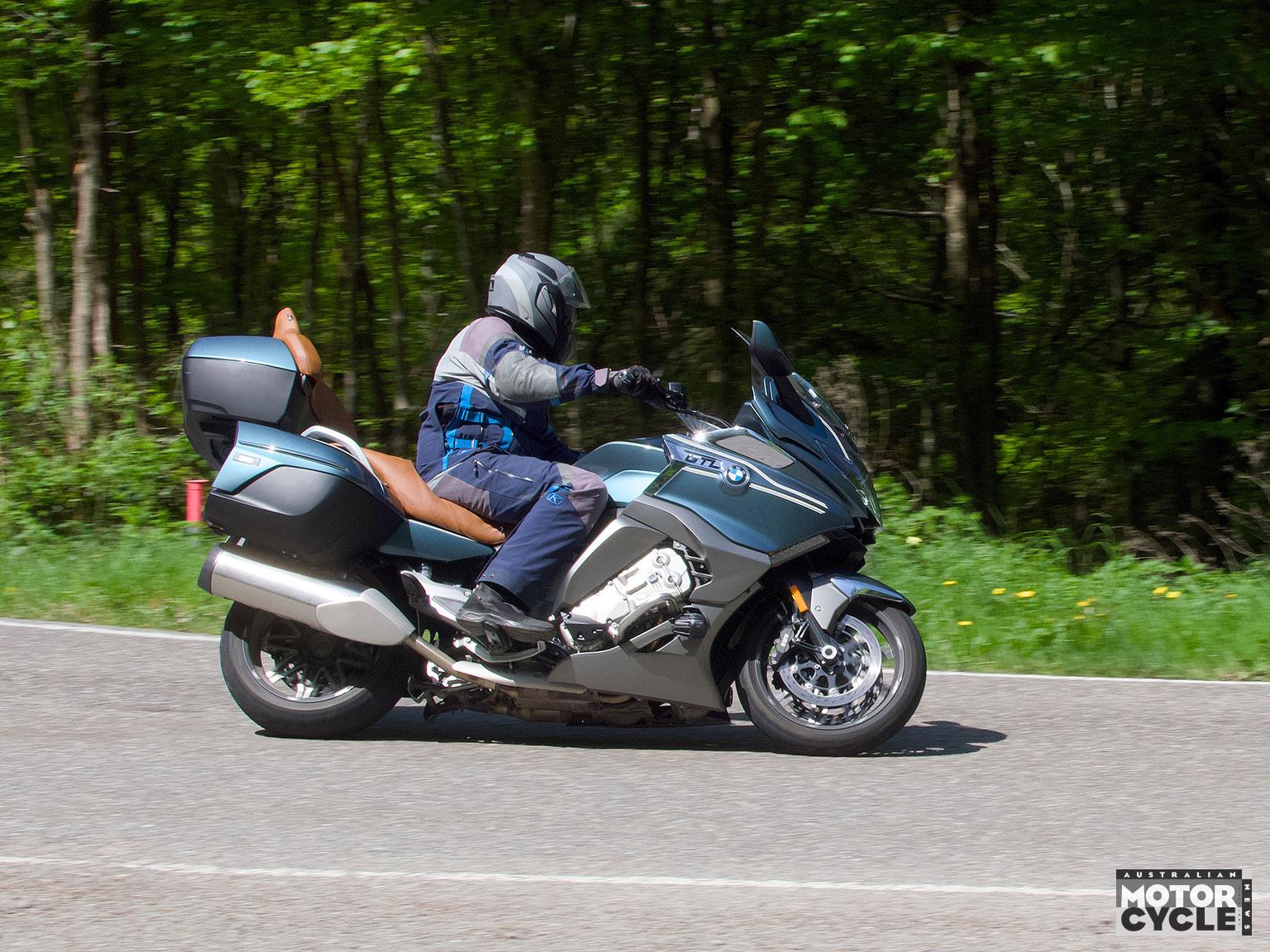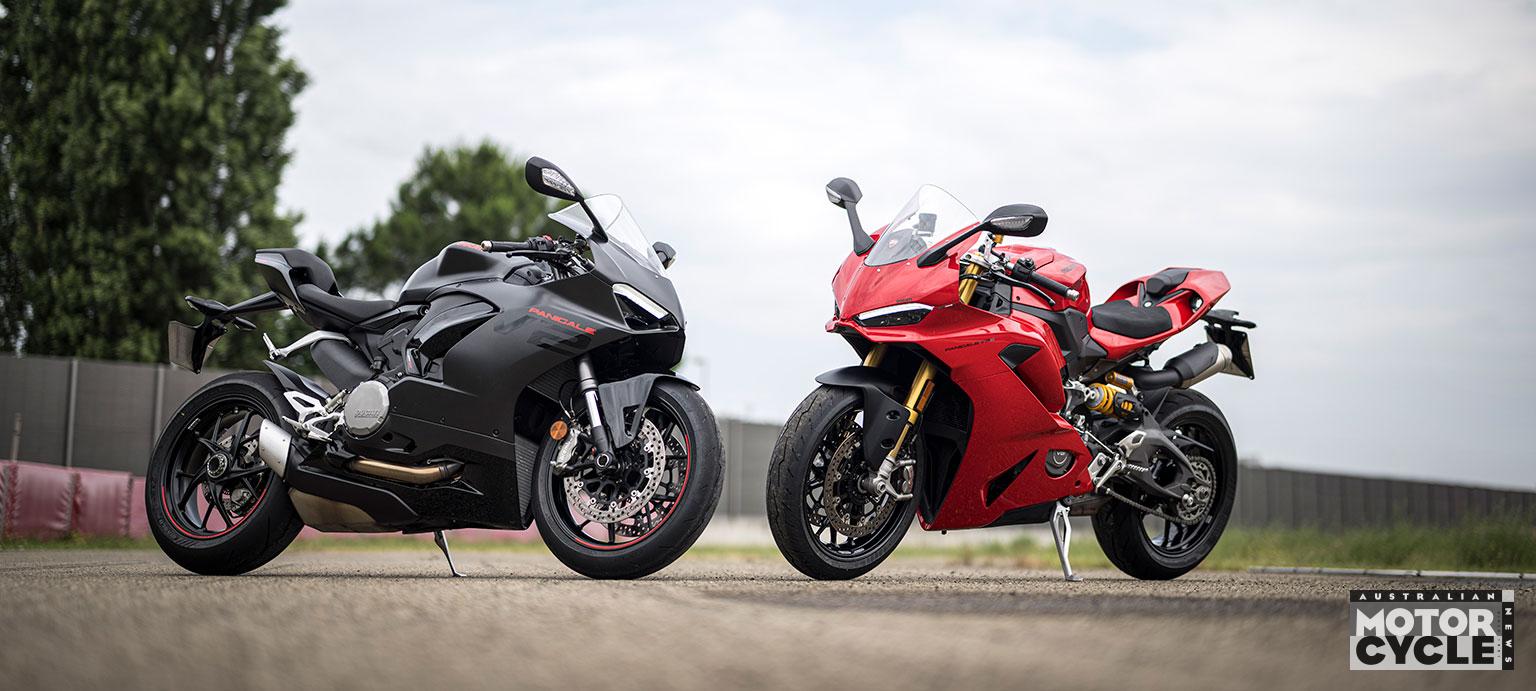Ducati’s latest Multistrada is made using a proven recipe: take the current top-of-the-tree model and add almost every factory accessory possible. In 2020 it did it with the 1260 Grand Tour V-twin and now, for 2024, it is the Multistrada V4 S Grand Tour.
But for 2024, things are slightly different because, along with making a bundle of optional touring-focused accessories standard fitment, Ducati has also added both technologies and parts from the proven Multistrada Rally, things that will also become standard on all Multistradas in 2024.

Three years after its first V4 Multi hit the road, Ducati says the Grand Tour is “the most complete Multistrada ever for lovers of long-distance travel in maximum comfort and safety”. So its spec sheet takes a while to read. From radar-based systems such as adaptive cruise control and blind-spot detection to an instant seat-height lowering system, which reduces the spring preload to its minimum at low speed or when stopped, it’s compelling reading with the bike’s predicted $45,200 price point. The package, which also includes LED lights, multiple riding modes, 60-litres of panniers, a main stand with ‘easy lift’, a hands-free fuel cap and a bespoke GT livery, is significantly cheaper than a fully spec’d V4 S with similar factory options fitted.
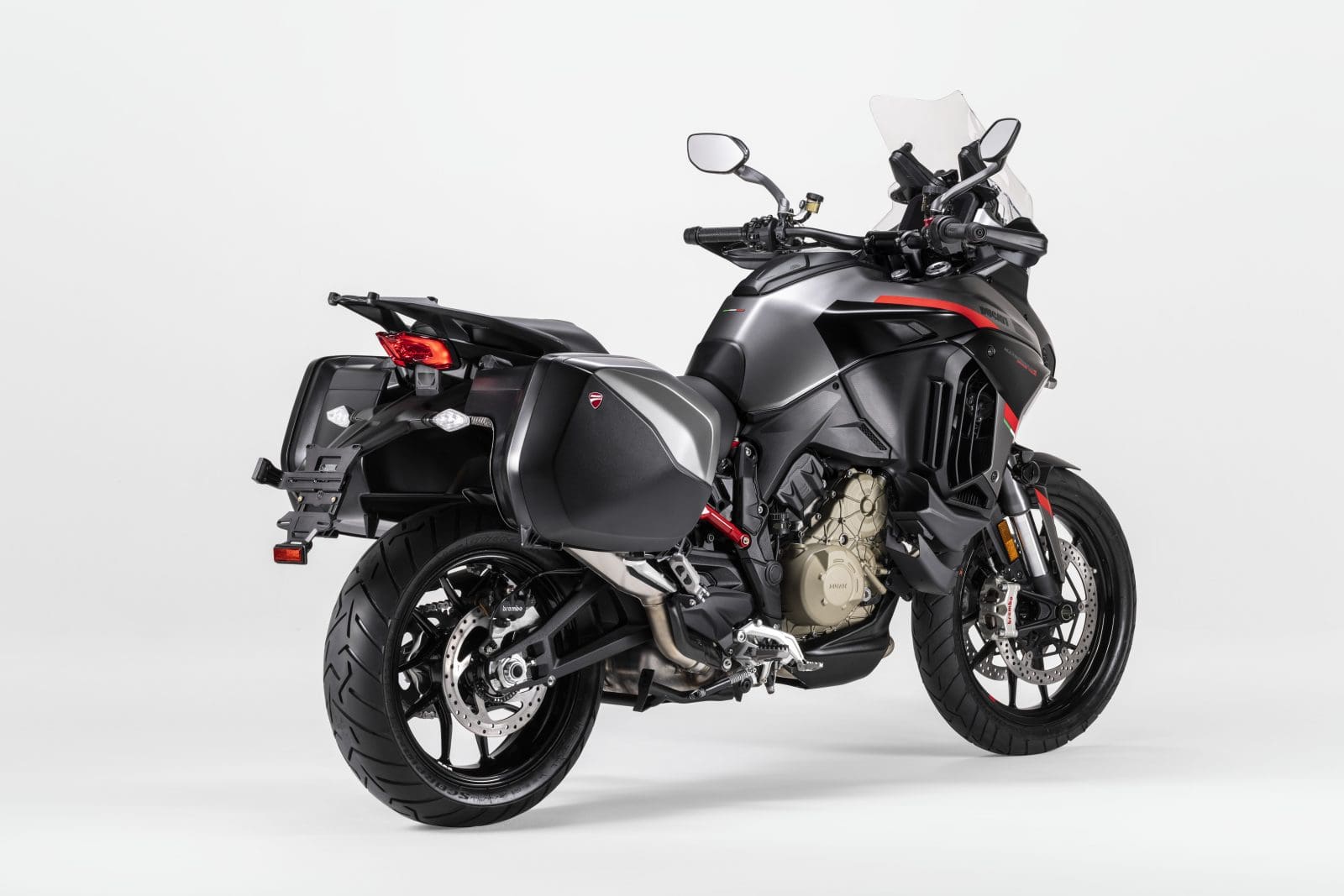
As well as looting the V4 S accessory catalogue and making a host of Multistrada extras standard fitments, Ducati has also given the Grand Tour the Multistrada Rally’s directly mounted handlebar configuration, for example. Ducati says this gives the rider better feel. There are added heat shields to isolate the rider from engine heat, adjustable air scoops to cool the rider and a more comfortable pillion seat.

The Granturismo V4 engine, with its counter-rotating crank, spring-operated valves and, most impressively, 125kW (168hp) at 10,500rpm and 125Nm of torque at 8750rpm, remains blissfully unaltered. The V4 remains a gem of an engine. Smooth and deceptively fast on the freeway, urgent and aggressive in the hills, the Granturismo remains one of the great Ducati engines. The only minor flaw is that the Grand Tour shares the version used in the current V4 S and not the new 2023 Rally. That means it doesn’t benefit from the latter version’s cylinder deactivation system, which deactivates the rear two cylinders below 4000rpm, improving fuel economy, emissions and, crucially, reducing engine heat to the rider at low rpm. Heat is noticeable, as with all V4 bikes, but Ducati has added extra heat protection and cooling for the rider.
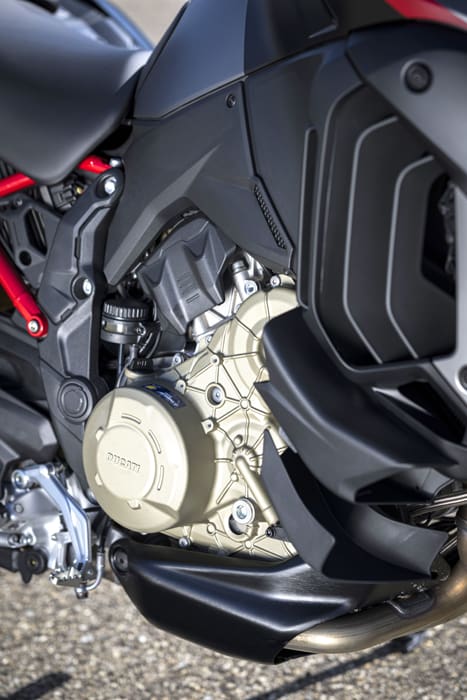
Its versatility is enhanced by four riding modes – Sport, Touring, Urban and Enduro – which vividly adapt and configure the bike’s power modes and the long list of rider aids to suit the terrain and riding mood.
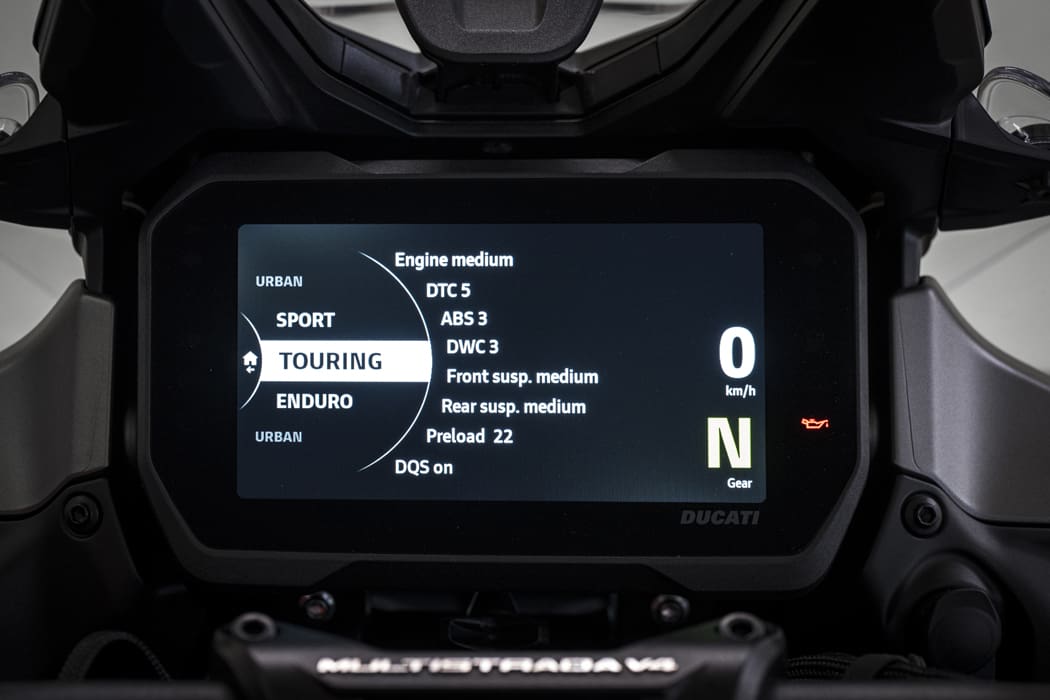
AMCN was invited to experience the new Grand Tour over two days in northern Italy, with enough kit in the 60-litre cases for an overnight stay near the Imola race circuit. As well as being blessed with kilometres of snaking asphalt we experienced several hours of autostrada riding, crunching out the kays to our overnight destination.

The Grand Tour took all in its authoritative stride, accelerating away from the toll booths like a superbike before cruising at 140km/h with the casual ease of a smooth thoroughbred tourer. On day one with the light fading and still 130 or so kays to process, I engaged the now-standard adaptive cruise control (by setting the cruise to 140km/h then releasing the throttle) and let the system work its wizardry, monitoring the distance between my bike and vehicles in front, adjusting my speed accordingly.
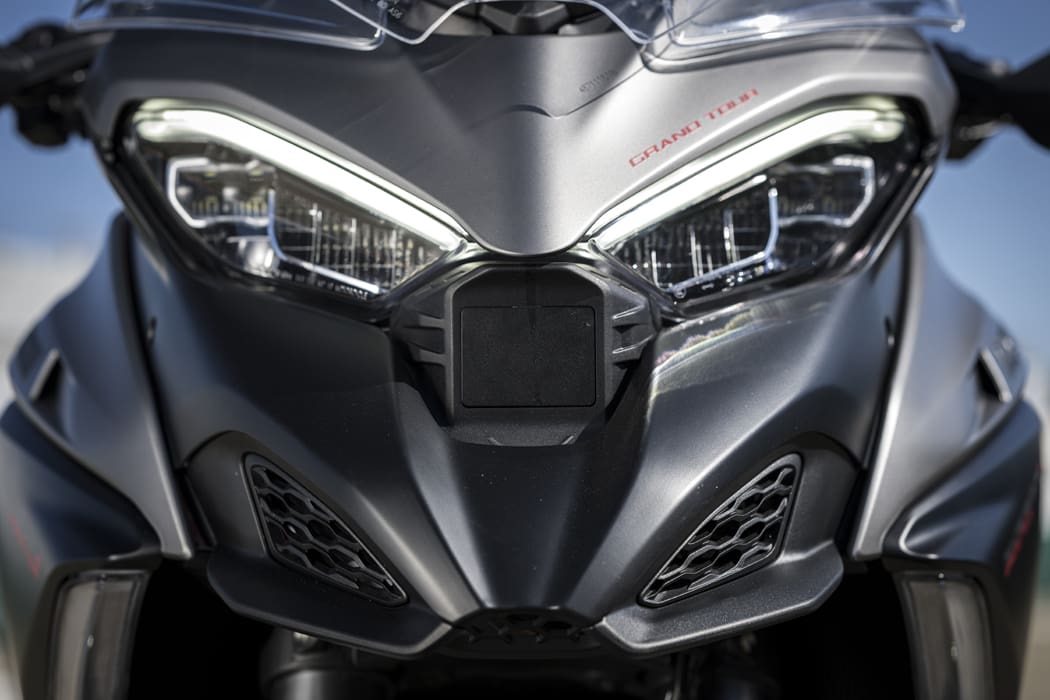
Just sit back in the comfortable seat and enjoy, the rider has little to do, and I mean that in a good way. Even the blind-spot detection works overtime so you can relax and conserve concentration, highlighting if it’s clear to change lanes. An LED light on each mirror illuminates when cars are storming up fast on either side, which is extra useful in the cut and thrust of an Italian rush hour. Be prepared to be overtaken and undertaken by anything driven by pretend Italian F1 drivers, usually on the phone and smoking.
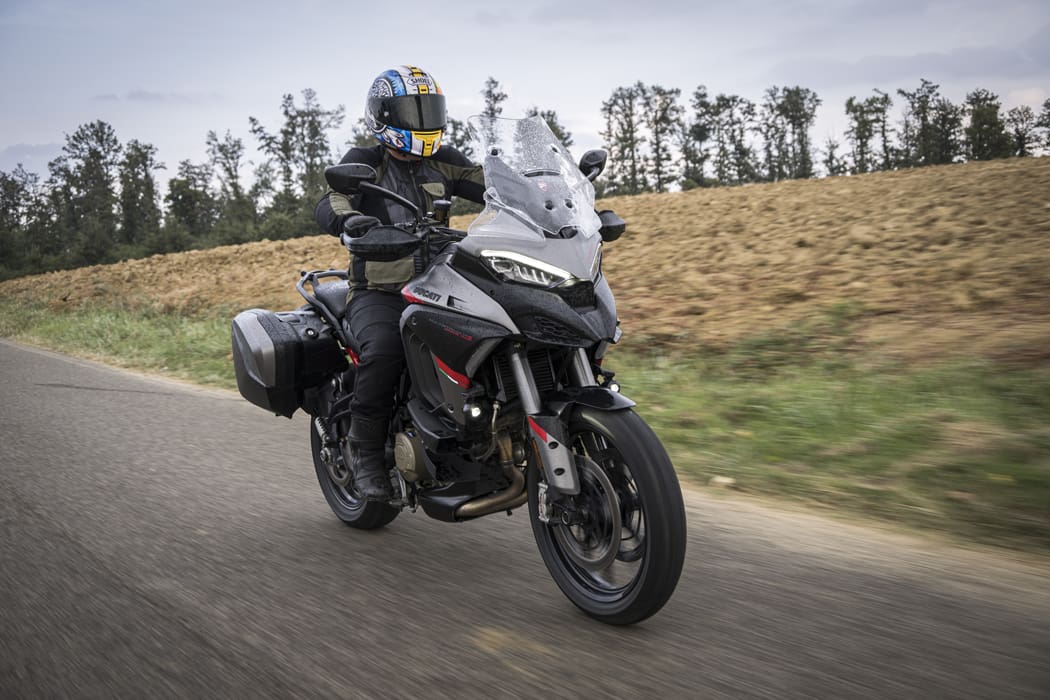
On day two, the GT demonstrated how multipurpose that V4 engine is and how useful and intuitive the riding modes are. In Urban mode, peak power is reduced to 85.75kw (115hp) with throttle response softened just-so and even the two-way quickshifter subtly adjusted to city needs too. Sport and Touring modes, meanwhile, deliver full power with Touring giving a less direct feeling at the throttle, with Sport a sharper response without being overly aggressive.

The majority of our second day of riding fixated on flowing along sweeping hillside roads on the way back to Bologna, which meant Touring mode was optimal for most of the time, and flicking into Sport for an extra drop kick in power to drive up extra steeper mountain passes. With so much power and torque to hand, the softer Touring mode was my favoured option.

When the roads became a racetrack and the adrenaline began to flow, I called up Sports mode, not only for the most direct connection between throttle and rear tyre contact patch but also for the extra support it injects into the semi-active Marzocchi suspension. Don’t be fooled, the new Grand Tour creams along like the very best touring machines, but when you want to embarrass a big-bore sportsbike it has the power, the handling and the attitude to deliver what we would have called mind-bending performance a few short years ago. Despite being laden with panniers and bristling with worthy touring equipment (yes, there’s even a centrestand), it’s responsive, full of grip and instils full confidence. Not many bikes with panniers can offer this level of performance and handling.

High-spec brakes are the same as the V4 S and, up front, come via tasty race-spec Brembo Stylema calipers, 330mm discs and cornering ABS as backup. The radial master cylinder adds to the GT’s high specification and is again similar to what you’d find on a high-end superbike of a few years ago. There’s outstanding stopping power when needed, the ABS isn’t intrusive in any way, and a lovely smooth actuation at slow speeds.

The quoted weight is expected to be a fraction more than the standard V4 S’s 215kg (dry) due to all its extras, but even with the panniers fully loaded the added weight was hardly noticeable thanks to the Skyhook semi-active suspension.

Like its engine performance, the Grand Tour’s dominant handling characteristics are dictated by the selected riding mode. Touring is plush and yielding yet holds the chassis well when you want to make the most of all those Italian horses. In Sports mode the Skyhook system transforms the Grand Tour into a purposeful and hard-edged performance tourer, the suspension movement reduced with more support available when you’re pushing hard, braking deeper and accelerating earlier. Poorly paved surfaces in the hills above Bologna barely reduced our pace as the GT never felt like it was close to the limit or about to do anything troublesome.

For a bike with a 19-inch front wheel and, for a roadster, long-travel suspension, it’s an integrated, sweet-handling package, backed up by some of the smartest rider aids on the planet. Wheelie control, traction control, plus cornering ABS are all present and all lean-sensitive. Their input and intervention levels are dependant on the riding mode selected, working in the background and enabling you to have fun in safety. Or alternatively you can reduce or turn off the excellent rider aids, should you wish to show the world your one-wheeled prowess.

The 2024 Grand Tour additionally comes equipped with two useful suspension aids: minimum preload and Easy Lift. As mentioned, the minimum spring preload function allows the rider to effectively increase sag and lower the seat height for low-speed refuge. How much the seat lowers depends on the weight the seat is carrying. I’m 169cm tall, and with the preload reduced I could get two confident feet on the ground. Once rolling again, you can press a button on the left bar to restore the preload to normal or, failing that, the system will automatically add the preload once up to around 100km/h.
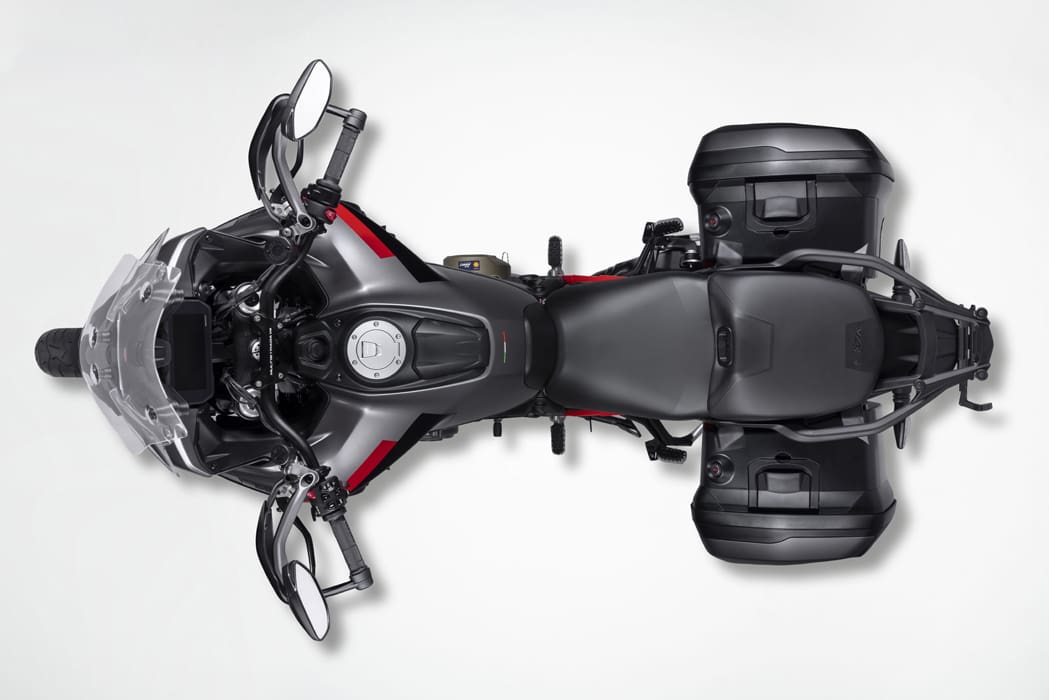
Easy Lift, meanwhile, opens up the suspension’s damping, softening it for around three minutes after the ignition is switched on and making it easier to lift the bike upright from the sidestand. With a fully loaded machine, it’s a welcome aid.
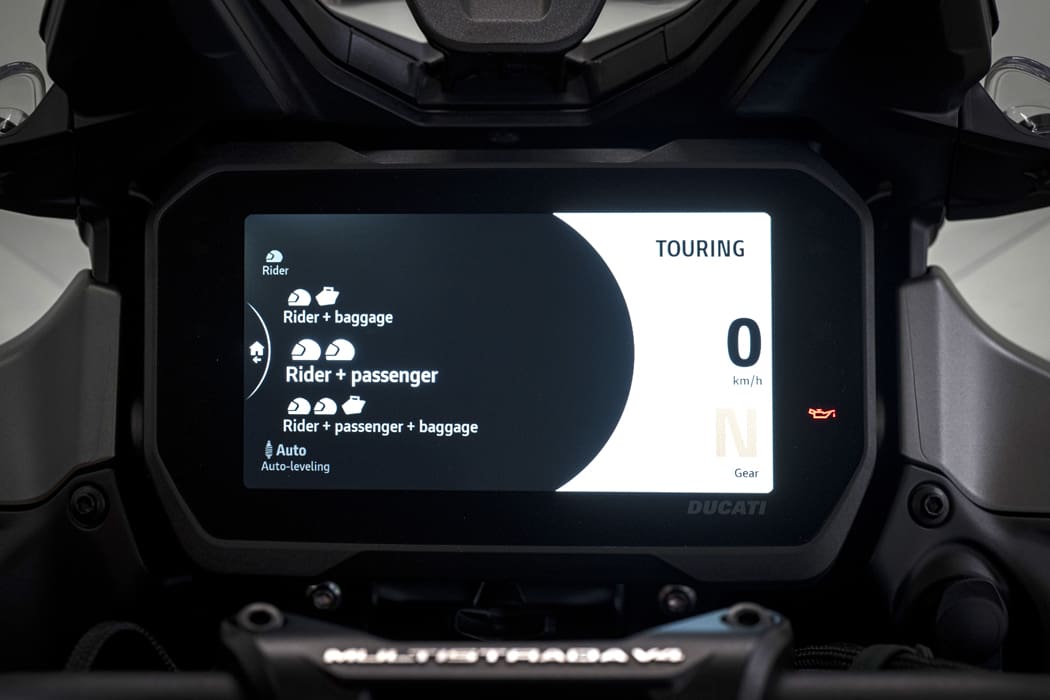
The large, adjustable screen remains only manually adjustable but is effective and only takes the lightest of touches to operate. Even at 140km/h I could ride visor up without my eyes watering. Yeah, you guessed it, I forgot my clear visor for night riding.
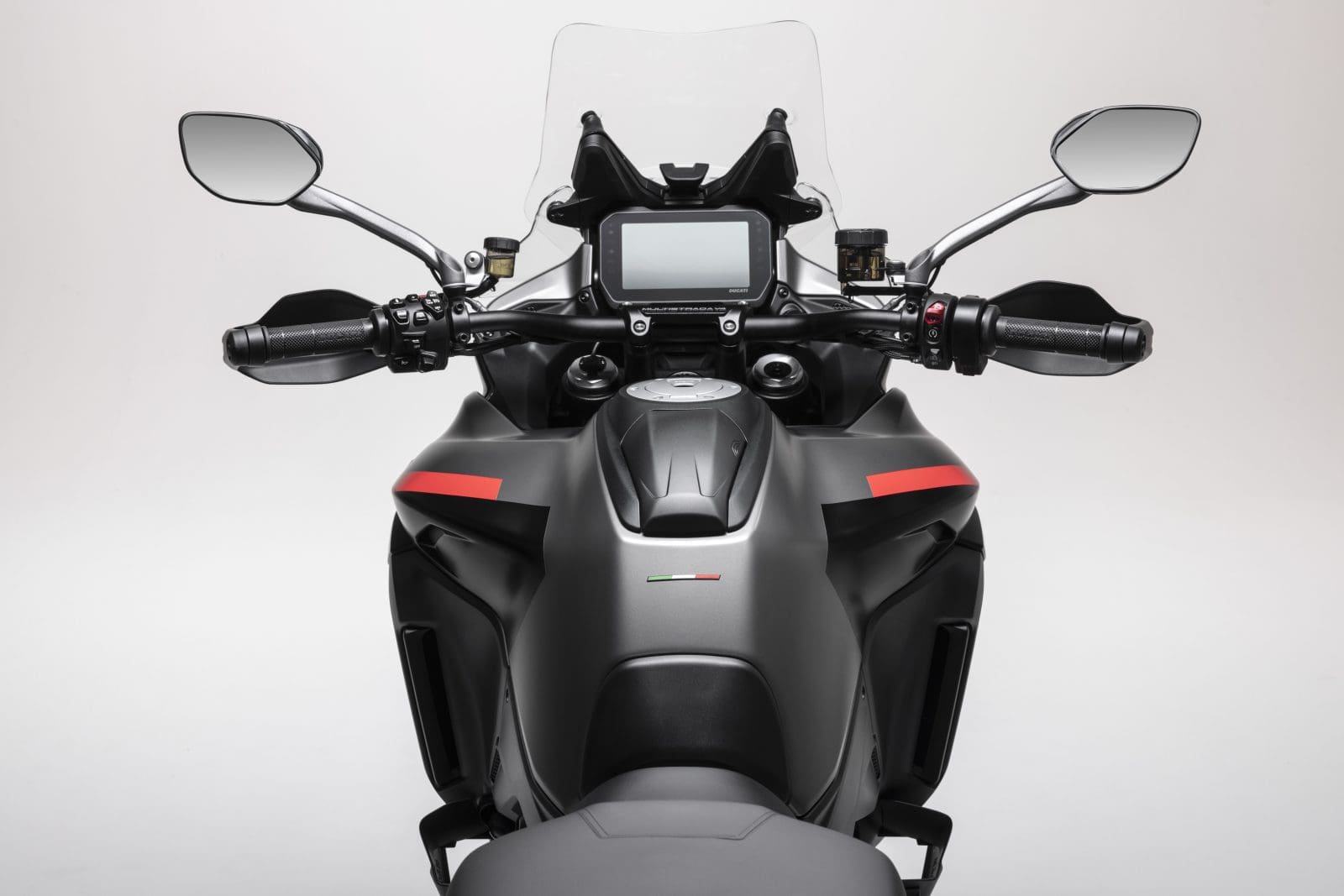
I was impressed with the versatile Multistrada V4 S when I first rode it in Italy in 2021. Since then I have done many more miles, which has only added to my high affection for this versatile all-rounder.

For 2024 Ducati has added even more spec, plus a few tweaks from the excellent V4 Rally, to produce not only the best Multi for long-distance touring but arguably one of the best bikes to have sporty fun on when you arrive, too. It’s laden with tech, it’s flexible and easy-going with first-class comfort and safety features, and comes with integrated new panniers. Add an ability to offer sportsbike levels of performance and you have a pretty exciting proposition.

As you’d expect it’s not cheap, but service intervals are wide and I reckon the price is justified in the machine’s quality and specifications – that’s how you can explain it to your better half. It’s not perfect; the GT doesn’t get the rear cylinder deactivation, which is really useful in hot Australian summers, the phone compartment is a little fiddly and you could argue the Enduro mode is tech for tech’s sake on the GT.
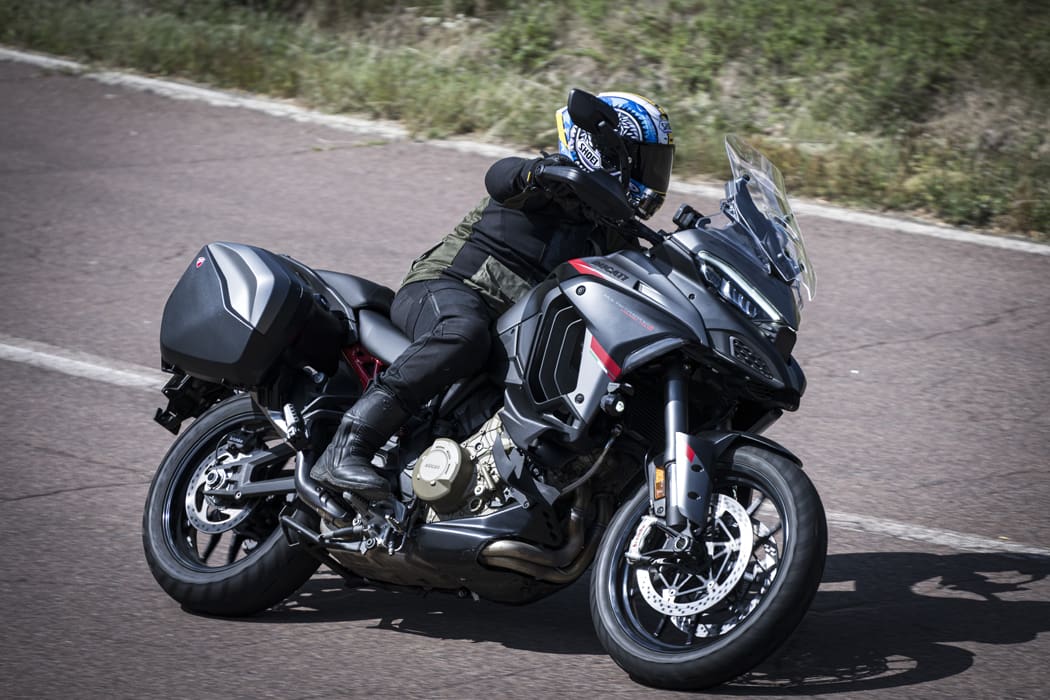
All that aside, the Grand Tour, with its attractive new livery and mighty spec, has made the Multi more tempting than ever. It’s a remarkable package when you need 10 minutes to list all the extras to your envious audience at the pub.

Test Adam Child + Photography Alex Photo

